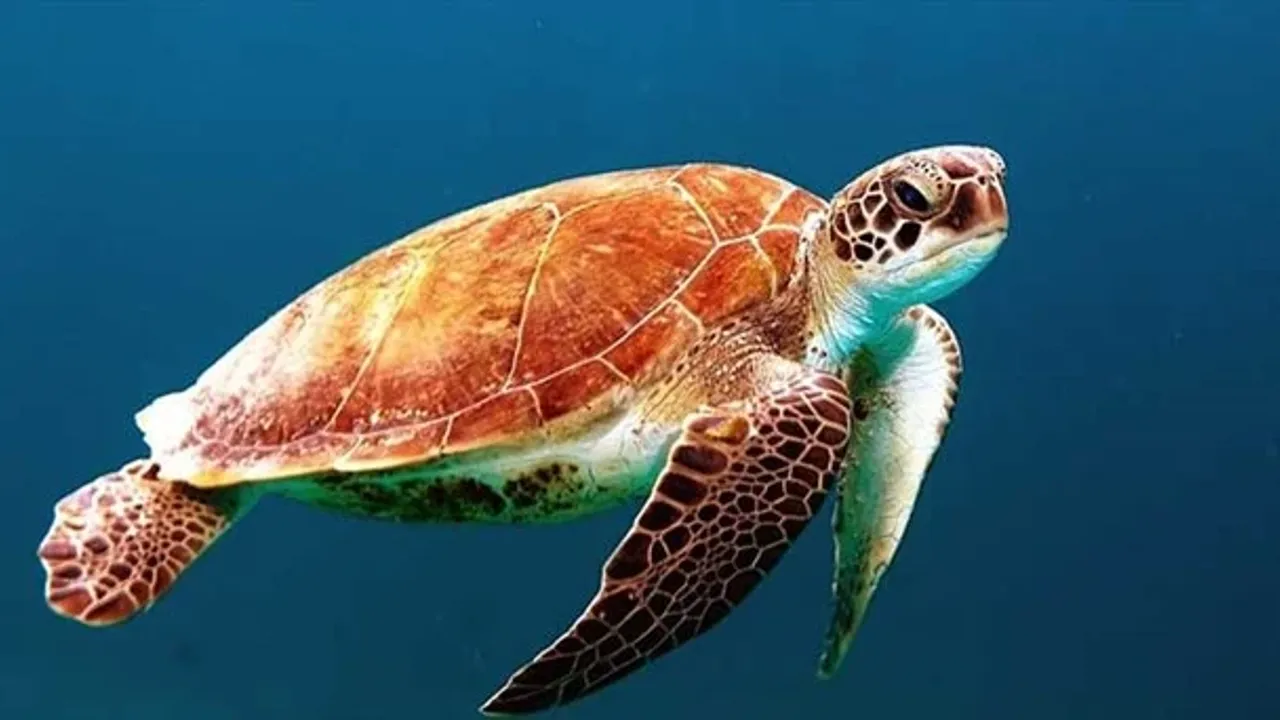In an interview with Anadolu, Dogan Sozbilen, a board member of the Sea Turtle Research, Rescue, and Rehabilitation Center (DEKAMER), discussed the effects of climate change and global warming on sea turtles.
Sea turtles are among the species most directly impacted by temperature, particularly in determining the sex of hatchlings, Sozbilen explained.
“When sea turtles lay their eggs in the sand, the sex of the hatchlings is not predetermined. Instead, gender determination is influenced by environmental factors. At a nest temperature of 29 degrees Celsius, approximately half of the hatchlings are female and the other half are male.
When the temperature exceeds this, the proportion of female hatchlings increases, while below this temperature, the proportion of males increases.”
“As temperatures continue to rise, we face the problem of an increasing female population. Additionally, when temperatures reach 33-34 degrees Celsius, embryo mortality begins to occur,” Sozbilen said.
Due to rising temperatures, sea turtles are expected to seek cooler habitats and reproduce during cooler periods.
Predicting significant impacts on sea turtles due to climate change, Sozbilen added: "Our research and various projections indicate that sea turtles will struggle to cope with climate change using their current reproductive strategies by the year 2100.”
"Shifting their breeding times to cooler periods alone will not suffice,” he said, noting that one of their studies published in 2023 found that nesting times worldwide could shift by up to 180 days in the long term, but these changes alone will not be sufficient.
Importance of sea turtles for marine and coastal ecosystems
Sozbilen highlighted that there are seven species of sea turtles inhabiting warm and tropical regions worldwide. In Türkiye, the loggerhead sea turtle (Caretta caretta) and the green sea turtle (Chelonia mydas) nest along the Mediterranean coast.
"Türkiye and Greece have the highest number of loggerhead turtle nests in the Mediterranean. Nearly 80 percent of green sea turtle nesting occurs in Türkiye.”
He emphasized the crucial ecological roles sea turtles play in maintaining the health of both marine and coastal ecosystems. "Beaches, which are an essential part of the coastal ecosystem, are nutrient-poor areas. By laying their eggs on these beaches, sea turtles provide a valuable food source for the plant and animal species that share this habitat.”
Furthermore, sea turtles help control jellyfish populations by feeding on them, thereby maintaining ecological balance.
Pollution problem
Pollution is another significant issue for the Mediterranean, Sozbilen noted.
"Between 2017 and 2022, we measured pollution levels in the digestive systems of dead or injured sea turtles that washed ashore, with levels exceeding 80% and reaching 100% in some areas. In Türkiye, this rate is around 35%, but the areas where we conducted our studies are relatively clean. We observe increasing pollution rates in the Eastern Mediterranean.”
“Plastics can block sea turtles’ digestive systems, leading to a slow and painful death. Large pieces can entangle their flippers, causing them to become weak and unable to feed.”
Since 2000, World Turtle Day is celebrated every year on May 23 to raise awareness and concern for the turtle ecosystem.






